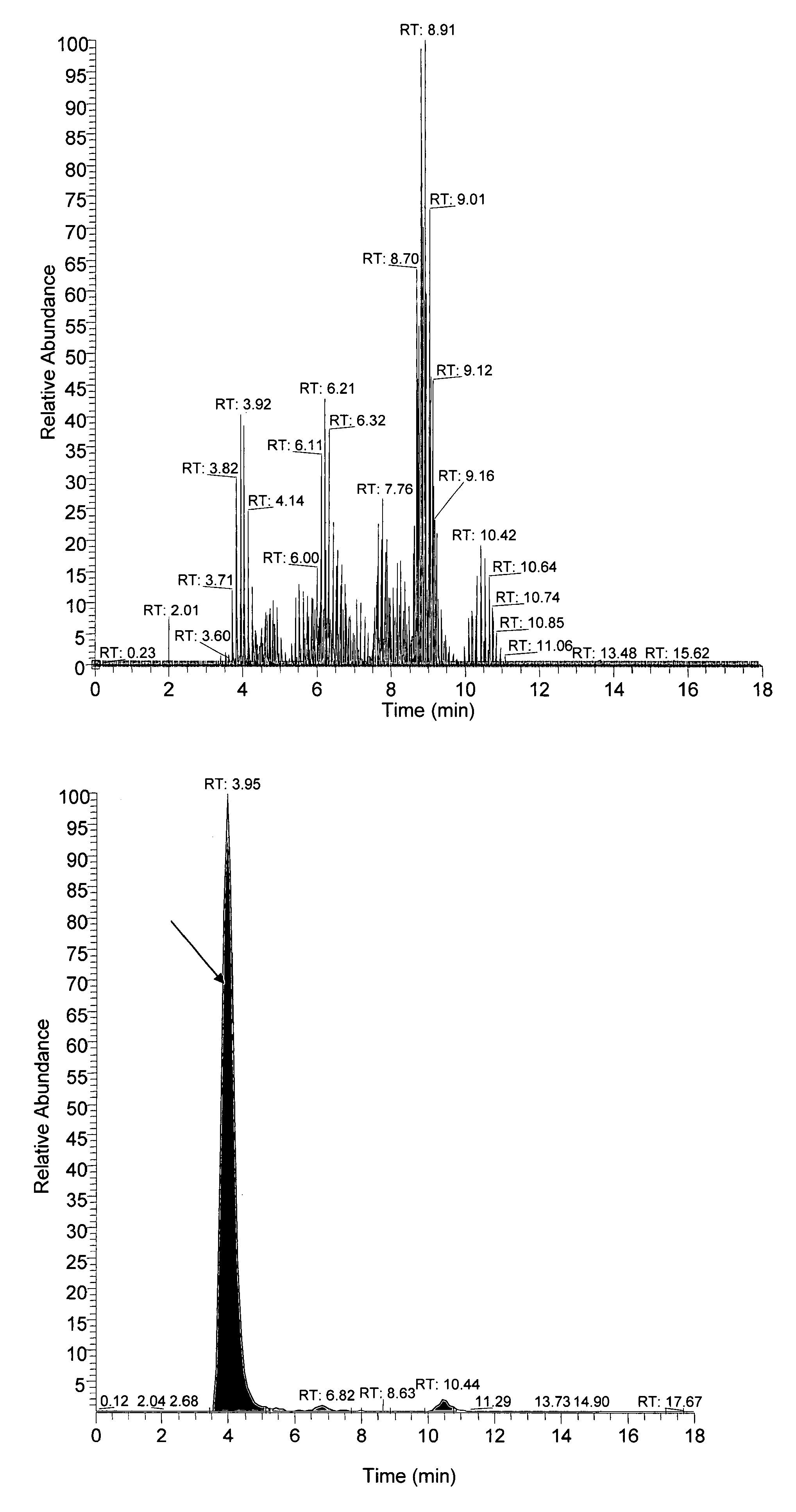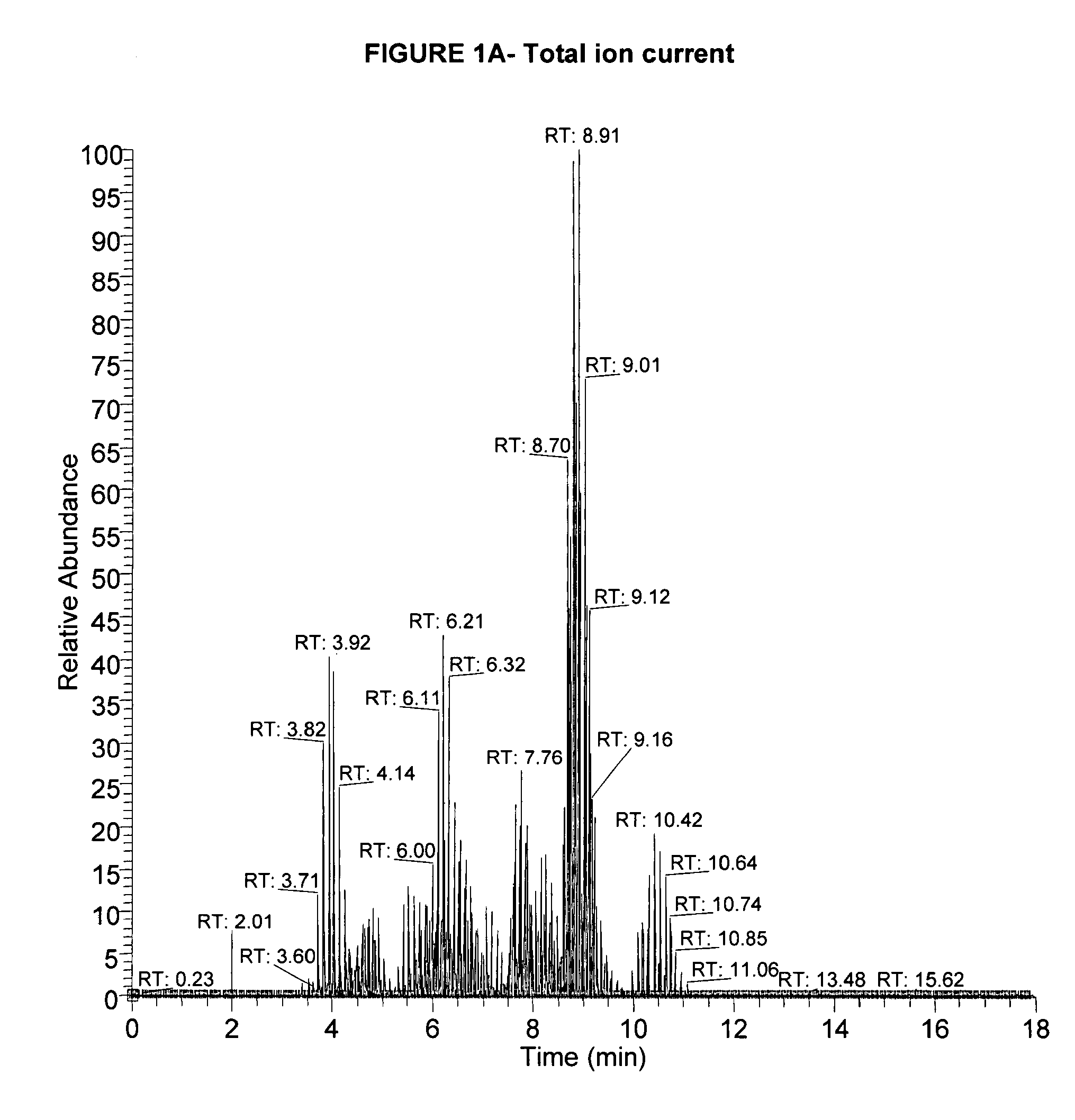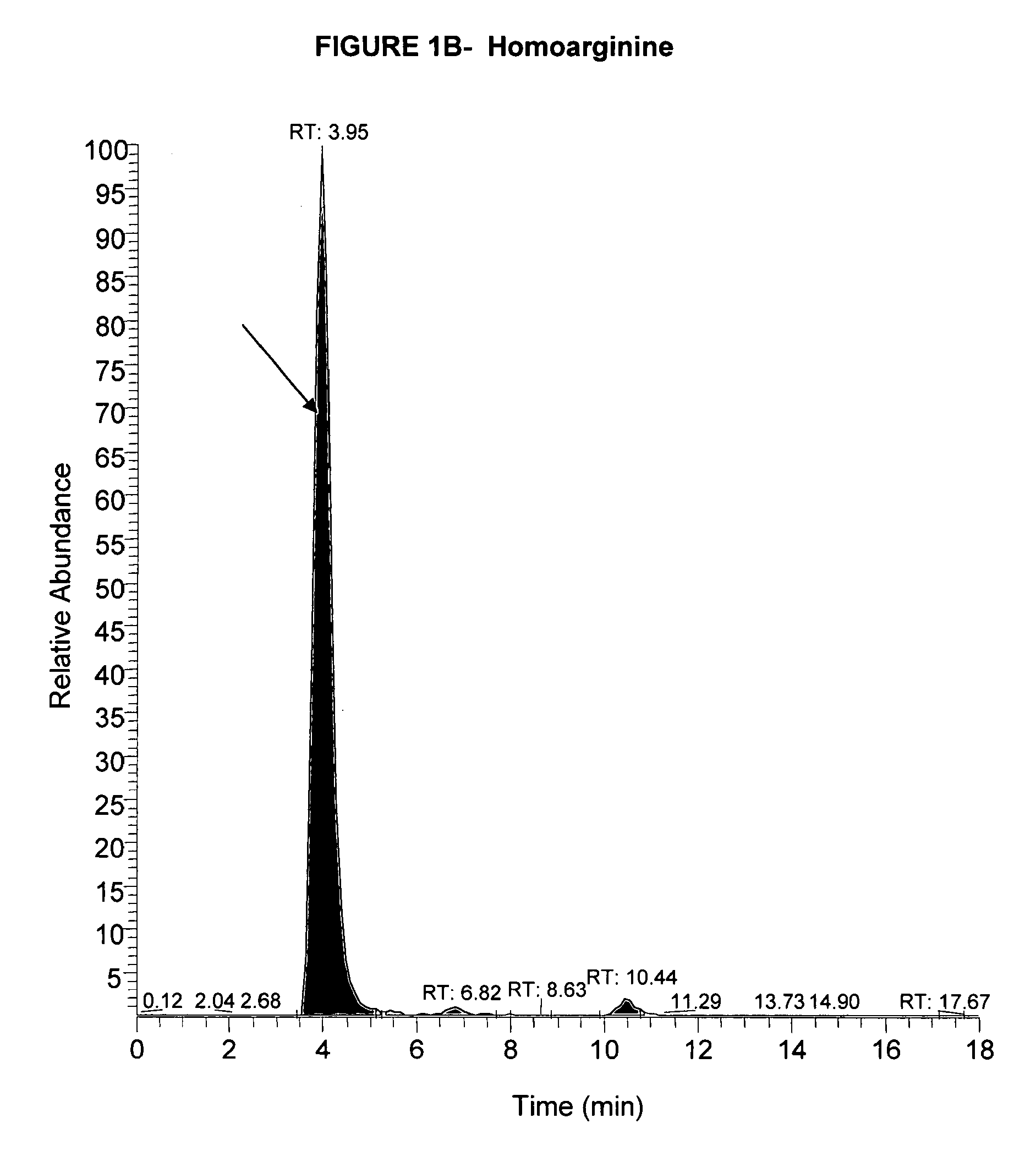Methods of determining levels of free amino acid and dipeptides and diagnosing alzheimer's diseases
a technology applied in the field of determining the levels of free amino acids and dipeptides and diagnosing alzheimer's diseases, can solve the problems of memory impairment, memory dysfunction, and impairment of learning new information, and achieve the effects of reducing and increasing the plasma level of dopamin
- Summary
- Abstract
- Description
- Claims
- Application Information
AI Technical Summary
Benefits of technology
Problems solved by technology
Method used
Image
Examples
example 1
[0119]This example shows quantification of free amino acids (“FAAs”) and dipeptides (“DPs”) using isotopic dilution liquid chromatography and electrospray ionization tandem mass spectrometry.
Materials and Methods
[0120]Ammonium formate, ultrapure HPLC grade water and methanol were bought from VWR (West Chester, Pa.). The EZ-Faast amino acid analyses kit containing sorbent extraction tips, extraction solutions, amino acid standards, derivatization reagents and C18 liquid chromatography column, was bought from Phenomenex (Torrance, Calif.). Bovine serum albumin and FAA standards including the internal standard ([2H3]-L-DOPA, [15N]-glutamine) not provided in the EZ-Faast kit were bought from Sigma (St Louis, Mo.). Protein dye reagent concentrate was from BioRad Laboratories (Hercules, Calif.).
[0121]Study participants who gave informed consent were recruited prospectively from the North Los Angeles area for our IRB-approved research. These subjects had no classifiable brain disorder afte...
example 2
[0138]This shows free amino acid and / or dipeptide changes in the body fluids from Alzheimer's disease subjects.
Materials and Methods
[0139]All reagents, solvents, amino acid standards, dipeptide standards, deuterated internal standards, protein dye reagent concentration and the C18 liquid chromatography column were as described in Example 1.
[0140]We recruited AD patients (“pAD”) and Control (“CT”) study participants prospectively from the North Los Angeles area for our IRS-approved research. We obtained informed consent from each study participant and all procedures complied with the Privacy of Personal Health Information Act and the Declaration of Helsinki principles for the use of human subjects in research. A neurologist obtained a complete medical history for each participant using a structured interview. A neuropsychologist administered a battery of cognitive assessments including the MMSE and ADAS-cog tests (Mendiondo et al., 2000; Weyer et al., 1997) to decide mental and cogni...
PUM
| Property | Measurement | Unit |
|---|---|---|
| capillary temperature | aaaaa | aaaaa |
| concentrations | aaaaa | aaaaa |
| antioxidant properties | aaaaa | aaaaa |
Abstract
Description
Claims
Application Information
 Login to View More
Login to View More - R&D
- Intellectual Property
- Life Sciences
- Materials
- Tech Scout
- Unparalleled Data Quality
- Higher Quality Content
- 60% Fewer Hallucinations
Browse by: Latest US Patents, China's latest patents, Technical Efficacy Thesaurus, Application Domain, Technology Topic, Popular Technical Reports.
© 2025 PatSnap. All rights reserved.Legal|Privacy policy|Modern Slavery Act Transparency Statement|Sitemap|About US| Contact US: help@patsnap.com



